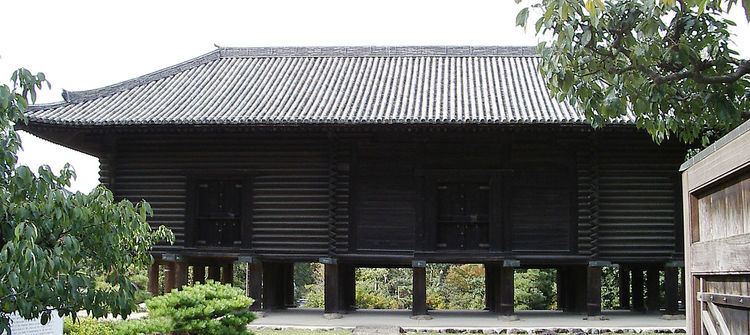Tenmei (天明) was a Japanese era name (年号, nengō, lit. year name), also known as Temmei, after An'ei and before Kansei. This period spanned the years from April 1781 through January 1789. The reigning emperor was Kōkaku-tennō (光格天皇).
1781 Tenmei gannen (天明元年): The new era name of Tenmei (meaning "dawn") was created to mark the enthronement of Emperor Kōkaku. The previous era ended and the new one commenced in An'ei 11, on the 2nd day of the 4th month.As is customary for choosing nengō, the name was selected from a passage in a historical Chinese text. In this case, the text was Classic of History (書経) (also quoted in The Great Learning (大學)). More specifically from the first of the King Tai Jia (大甲) chapters. It says: "先王顧諟天之明命..." meaning "The former king kept his eye continually on the bright requirements of Heaven, [and...]." This is continued with a description of reverence, virtue, and prosperity for the lands. From this, the two characters 天 and 明 were selected.
1782 (Tenmei 2): Great Tenmei Famine is said to have begun.1782 (Tenmei 2): An analysis of silver currency in China and Japan was presented to the emperor by Minamoto no Masatsuna.1783 (Tenmei 3): Mount Asama (浅間山,, Asama-yama) erupted in Shinano province only 80 miles northwest of Edo—loss of life estimated at 20,000+. [Today, Asama-yama's location is better described as on the border between Gunma and Nagano prefectures]. Japanologist Isaac Titsingh's published account of the Asama-yama eruption will become first of its kind in Europe and the West (1820). The volcano's devastation makes the Great Tenmei Famine even worse. Much of agriculture of Shinano and Kōzuke provinces would consequently remain unproductive or under-producing for the next four or five years.1783 (Tenmei 3): Famine was exacerbated, according to 20th century studies, because after 8 years of near or actual famine, neither the authorities nor the people had any reserves left to meet further drought and crop failures of the "Great Tenmei Famine."1784 (Tenmei 4): Country-wide celebrations in honor of Kōbō-Daishi, founder of Shingon Buddhism who died 950 years earlier.1784 (Tenmei 4): The son of the Shogun's chief counselor was assassinated inside Edo Castle. The comparatively young wakadoshiyori (junior counselor), Tanuma Okitomo, was the son of the senior councilor Tanuma Okitsugu. The younger Tanuma was killed in front of his father as both were returning to their norimono after a meeting of the Counselors of State had broken up. The involvement of senior figures in the bakufu was suspected; however, none but the lone assassin himself was punished. The result was that Tanuma-initiated, liberalizing reforms within the bakufu and relaxing the strictures of sakoku were blocked.September 17, 1786 (Tenmei 6, 25th day of the 8th month): Shogun Tokugawa Ieharu died and was buried in Edo.1787 (Tenmei 7): Tokugawa Ienari becomes the 11th shogun of the bakufu government.1787 (Tenmei 7): Kutsuki Masatsuna published Seiyō senpu (Notes on Western Coinage), with plates showing European and colonial currency.1788 (Tenmei 7): Riots in rice shops in Edo and Osaka.1788 (Tenmei 8): Great Fire of Kyoto. A fire in the city, which began at 3 o'clock in the morning of March 6 (Tenmei 8, 29th day of the 1st month), continued to burn uncontrolled until March 8 (Tenmei 8, 1st day of the 2nd month); and embers smoldered until they were extinguished by heavy rain on March 11 (Tenmei 8, 4th day of the 2nd month). The emperor and his court fled the fire, and the Imperial Palace was destroyed. No other re-construction was permitted until a new palace was completed. This fire was considered a major event. The Dutch VOC opperhoofd in Dejima noted in his official record book that "people are considering it to be a great and extraordinary heavenly portent." 
